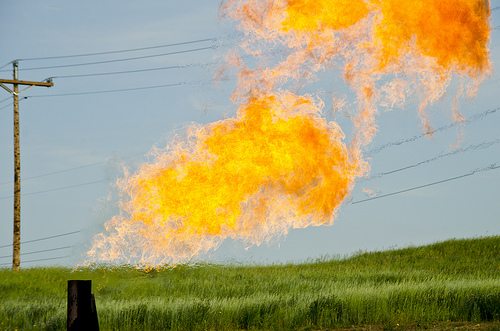

Features
Why gas is not green
There is a growing enthusiasm for natural gas as a relatively low-carbon fuel, with the government in the UK looking to emulate the US shale gas revolution. Seb Beloe of WHEB Asset Management asks, “Is gas really a green fuel?”
There is no doubting the growing momentum building behind natural gas as a source of energy. The chancellor George Osborne is keen to position the UK as a ‘gas hub’ and provide generous tax breaks to encourage the industry, the International Energy Agency (IEA) has proclaimed a new ‘golden age of gas’ and all the old oil and gas companies are now reinventing themselves as ‘gas and oil’ companies.
This enthusiasm is becoming more and more evident in sustainable investing as well. The respected sell-side analyst teams at Cheuvreux and Citi have recently published reports proclaiming the benefits of natural gas as part of the ‘green economy’. Citi in a report dated September 12 2012 describes the relationship between shale gas and renewables as ‘symbiotic’, with gas providing back-up generation capacity when intermittent renewables fail to deliver.
As of May 31 2013, at least two climate change focused funds held shares in BG Group: F&C’s Global Climate Opportunities Fund as a top 10 holding and the Schroder Global Climate Change Fund as a the top three holding.
But is natural gas really a ‘green’ option? Certainly it is true that efficient combined cycle gas turbines (CCGT) are able to generate power with approximately half the carbon intensity of even the most efficient coal-fired power plant. However, some forms of gas production – particularly shale gas – are thought to generate significant additional greenhouse gas emissions through fugitive methane emissions during extraction and production.
The precise amount of leakage is in debate. Several studies suggest emissions more than offset the carbon benefits of gas power; others suggest the emissions just reduce the overall benefit.
While most resistance to shale gas has come from the environmental impact of ‘fracking’, including from fugitive methane emissions, we are more concerned that support for natural gas will displace renewables with a consequent impact on greenhouse gas emissions resulting from gas power generation.
Fatih Birol, the IEA’s chief economist, argues that governments are actively moving to foster support for gas as a source of power in preference to renewables. A move away from renewables would, Birol said, increase the risk of ‘catastrophic’ climate change.
In the UK, the independent Committee on Climate Change also reached a similar conclusion, arguing that a move to gas-fired power generation would undermine reductions in carbon emissions unless carbon capture and storage (CCS) technology is deployed on all new gas-fired power plants from 2020.
The average emissions intensity of UK power generation today is about 450g of carbon dioxide equivalents per kilowatt hour (CO2e/Kwh). According to the committee, by 2030, for the UK to stay on track for overall carbon reductions by 2050, this will need to be approximately 50g of CO2e/Kwh. Gas power has an intensity of approximately 390g of CO2e/Kwh, demonstrating just how limited the space for unabated gas power is in the UK in 2030.
The precise trajectory of emission reductions varies by geography of course, but, as the IEA has pointed out, “Natural gas is not the answer” as the emissions per Kwh from an average gas-fired plant will be higher than the average global CO2 intensity in electricity generation by as early as 2025 if emission reductions targets are achieved.
Natural gas-fired power plants will of course still have a role, but only in backing up renewable generation. On this basis, and assuming that climate change objectives are to be met, the report concludes that there are questions around the long-term viability of some of the gas infrastructure investment that has taken place in recent years.
The enthusiasm that is being displayed for natural gas by the oil and gas companies and their supporters is to be expected. BG, Shell and BP are still selling products that are carbon intense. They call for more natural gas as ‘a bridge to a low carbon future’, conveniently defending business as usual.
In our view, unless the gas is coming from non-fossil sources and/or carbon capture and storage is installed on gas powered generation, then natural gas does not represent a ‘solution’ to the problem of climate change. In the words of Jeremy Leggett the Chairman of Solarcentury, “Gas isn’t a bridge to a low-carbon future, it is just a bridge to a gas future.”
Seb Beloe is a partner and head of sustainability research at WHEB Asset Management. This is an updated version of an article that originally appeared on WHEB’s blog in October 2012.
Further reading:
Gas: earthquakes, explosions and energy
Fracking firms warned over risks after report suggests it could reduce bills
UK shale gas reserves could exceed expectations
Too early to say’ whether fracking will reduce bills, say MPs


 Environment10 months ago
Environment10 months agoAre Polymer Banknotes: an Eco-Friendly Trend or a Groundswell?

 Environment11 months ago
Environment11 months agoEco-Friendly Home Improvements: Top 7 Upgrades for 2025

 Features9 months ago
Features9 months agoEco-Friendly Cryptocurrencies: Sustainable Investment Choices

 Features10 months ago
Features10 months agoEco-Friendly Crypto Traders Must Find the Right Exchange



























